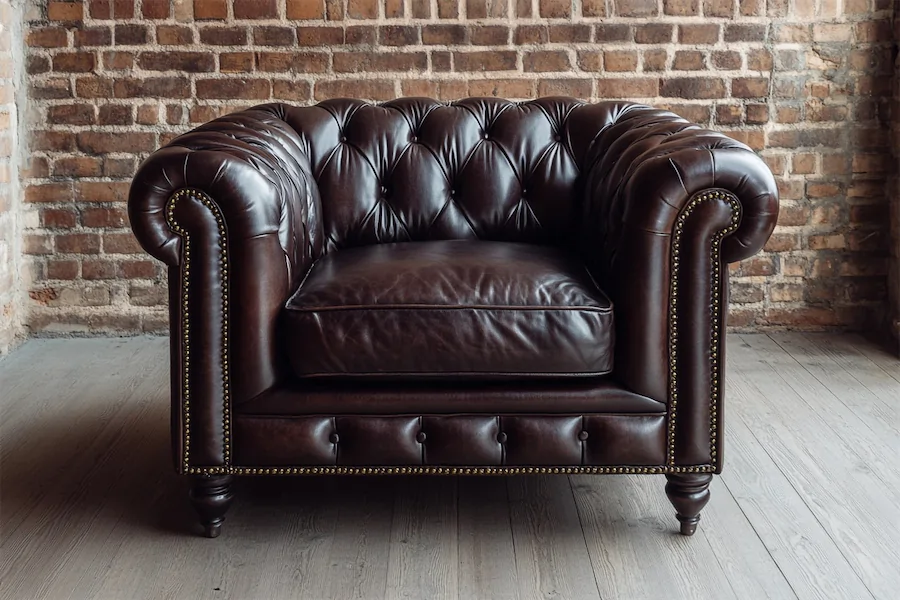A Chesterfield chair is a distinguished piece of furniture renowned for its deep button-tufted upholstery, rolled arms, and equal back and arm height. Originating in 18th-century England, it has become a symbol of elegance and sophistication in interior design.
History and Origins of the Chesterfield Chair
The Chesterfield chair’s history dates back to the mid-1700s, attributed to Lord Philip Stanhope, the 4th Earl of Chesterfield. Known for his refined taste, Lord Stanhope purportedly commissioned a chair that would allow gentlemen to sit upright without wrinkling their garments. This request led to the creation of a seat with deep buttoned leather upholstery, a low seat base, and rolled arms, embodying both comfort and formality.
During the Victorian era, the design evolved to incorporate coiled spring suspensions and luxurious features, enhancing comfort and solidifying its status as a symbol of British craftsmanship and style.
Key Features of a Chesterfield Chair
- Deep Button-Tufting: The hallmark of a Chesterfield, featuring a quilted pattern achieved through deep buttoning, traditionally done by hand.
- Rolled Arms: Prominent, outwardly rolled arms that are level with the backrest, contributing to its distinctive silhouette.
- Equal Back and Arm Height: Both the backrest and armrests are of the same height, creating a uniform appearance.
- Leather Upholstery: Originally upholstered in high-quality leather, often in rich, dark tones; modern variations may use a range of fabrics.
- Nailhead Trim: Many designs include decorative nailhead trim along the arms and base, adding to the classic aesthetic.
Applications of Chesterfield Chairs
- Living Rooms: Serve as statement pieces, adding a touch of classic elegance to seating areas.
- Offices and Studies: Provide a sophisticated seating option, reflecting professionalism and timeless style.
- Libraries: Enhance the ambiance of reading rooms with their comfortable and inviting design.
- Boutiques and Hotels: Often used in lobbies and waiting areas to convey luxury and comfort.
Considerations When Choosing a Chesterfield Chair
- Space and Proportion: Ensure the chair’s dimensions suit the room, as its substantial design can dominate smaller spaces.
- Upholstery Material: Decide between traditional leather or alternative fabrics, considering factors like durability, maintenance, and aesthetic preference.
- Comfort: While iconic in design, assess the chair’s comfort level, especially if it will be used frequently.
- Authenticity: Verify craftsmanship and materials if seeking an authentic or antique piece, as quality can vary significantly.
Conclusion
The Chesterfield chair remains a timeless icon in furniture design, embodying a blend of comfort, elegance, and historical significance. Its distinctive features and rich heritage make it a versatile choice for various interior settings, from traditional to contemporary spaces.
